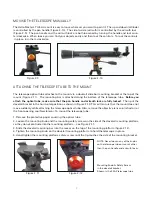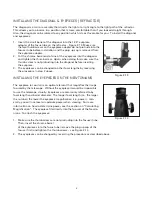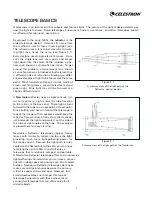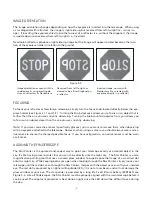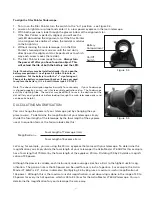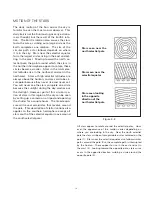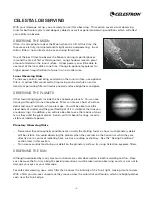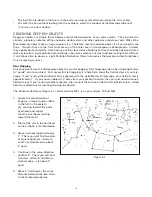
Aligning the Secondary Mirror
The following describes the procedure for daytime collimation of your telescope using the optional Newto-
nian Collimation Tool (#94183) offered by Celestron. To collimate the telescope without the Collimation Tool,
read the following section on night time star collimation. For very precise collimation, the optional Collima-
tion Eyepiece 1 ¼” (# 94182) is offered.
If you have an eyepiece in the focuser, remove it. Rack the focuser tube in completely, using the focusing
knobs, until its silver tube is no longer visible. You will be looking through the focuser at a reflection of the
secondary mirror, projected from the primary mirror. During this step, ignore the silhouetted reflection from
the primary mirror. Insert the collimating cap into the focuser and look through it. With the focus pulled in
all the way, you should be able to see the entire primary mirror reflected in the secondary mirror. If the pri-
mary mirror is not centered in the secondary mirror, adjust the secondary mirror screws by alternately tight-
ening and loosening them until the periphery of the primary mirror is centered in your view. DO NOT loosen
or tighten the center screw in the secondary mirror support, because it maintains proper mirror position.
Aligning the Primary Mirror
Now adjust the primary mirror screws
to re-center the reflection of the small
secondary mirror, so it’s silhouetted
against the view of the primary. As you
look into the focuser, silhouettes of the
mirrors should look concentric. Re-
peat steps one and two until you have
achieved this.
Remove the collimating cap and look
into the focuser, where you should see
the reflection of your eye in the second-
ary mirror.
21

